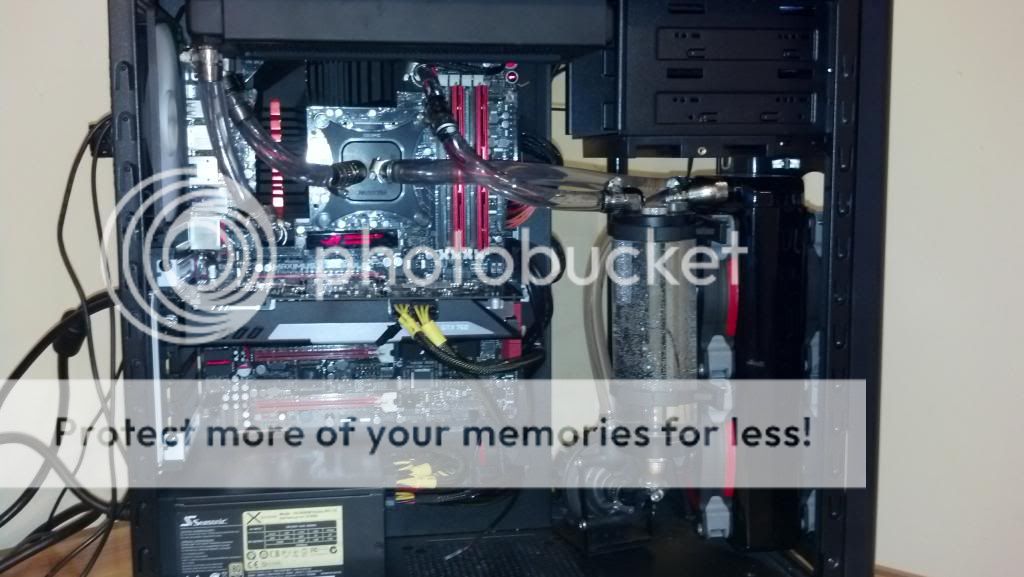4Ryan6
Champion
stickg1 :
It seems like my loop is filled with really tiny bubbles. Is this normal or bad? If bad, how do I fix it?
Also, Ry. If I add a GPU block to the loop, should I keep my rads setup the way they are now? Res > Pump > Rad > CPU > Rad > GPU > Res?
Also, Ry. If I add a GPU block to the loop, should I keep my rads setup the way they are now? Res > Pump > Rad > CPU > Rad > GPU > Res?
Regarding bubbles: As long as the res is sealed you can jostle it around and shake the bubbles loose, sometimes to remove trapped air you have to move the computer from side to side or front to rear to dislodge the air that additionally can get trapped in the radiator housing ends.
Regarding Adding a GPU: Overclocking the CPU is seriously affected when you add a GPU to the loop others will argue against my advice but a GPU cooled especially with a full coverage water block IMO, requires it's own loop, unless CPU overclocking is not critical, but 2 GPUs in SLI or Crossfire absolutely definitely on their own loop.
Overclocking the CPU has everything to do with how the water cooling is approached, what you can get away with a Sandy Bridge you already know cannot be the same with an Ivy Bridge that runs hotter, and Haswell too.
That heat from the overclocked CPU is a constant especially regarding the voltage it takes and how far the CPU is actually overclocked, then what may be an acceptable CPU load temperature at say 4.8ghz, goes out the window when GPU heat is added to the loop.
A GPU and CPU on the same loop under a gaming load limits the CPUs overclock, as the load temperature is higher because of the GPUs added heat to the loop, even when the GPU is idling like in a CPU stress test it is still adding heat.
You're in a learning process right now because you are an overclocker and your goals will eventually be similar or the same as mine, because you are stepping into new territory of cooling, but whether you'll be satisfied with your discoveries or not remain to be seen.
Just as with air cooling, water cooling with radiators, is subject to ambient room temperature.
















